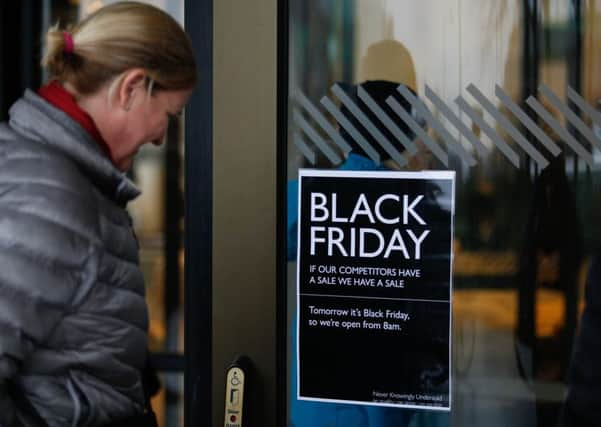Who will spend the most on Black Friday?
This article contains affiliate links. We may earn a small commission on items purchased through this article, but that does not affect our editorial judgement.


On Black Friday, it is the North West, Scotland and the Midlands who are the biggest spenders, with London and the South West showing least interest.
New analysis from MBNA, one of the UK’s leading credit card providers, shows Fridays and Mondays have become the most popular shopping days for their customers. Fewer people are spending the weekends online shopping, meaning that Saturday and Sunday are declining as the “shopping” days of the week.
Advertisement
Hide AdAdvertisement
Hide AdOriginating in the United States, Black Friday follows the Thanksgiving holiday (the fourth Thursday in November) where holiday shoppers descend on stores, hoping to save on their Christmas shopping. Cyber Monday later emerged as a way of persuading the same shoppers to find the same bargains online a few days later.
In 2014, UK shoppers spent a total of £810 million on Black Friday, while Cyber Monday generated £720 million. Based on previous years’ data, if trends continue, then spending may surpass the £1 billion mark on Black Friday.
Data shows Black Friday first started to appear in the UK in 2012, developing to become a prominent feature in 2013. In 2014, Britons increased their spending on the previous year by 17 per cent. Cyber Monday emerged in 2013, but 2014 was the year when it became visible in our spending habits. The data reflects an increasing amount of concentrated spending on these two days, compared to the weeks before and after. The increased amount of activity on these two days has consequently seen a drop in the spending in the weeks leading up to and following these days.
The trends are also reflected by age and gender. Since 2012, the under-30s have seen a 37 per cent increase in spend proportion on Black Friday, compared to a 9 per cent increase in the 60+ age group. On Cyber Monday, it is the 60+ age group that continues to have the highest proportional spend, but the under-30s are catching up fast by increasing their spend on this day.
Historically, there has been little difference between genders. Both men and women spend proportionally more on Black Friday and Cyber Monday, however women continue to spend more than their male counterparts. In fact, women are currently spending around 40 per cent more on Black Friday than they do on a typical day.
Commenting on the data, Alan North, Director of Credit and Analytics at MBNA, said: “Online shopping is turning our traditional spending habit on its head. While some of us are still content to brave our Christmas shopping in the final few days, many more of us are now taking advantage of the promotions driven by Black Friday and Cyber Monday. The data shows that the goalposts are moving and millions of shoppers are reaping the rewards of major discounts in stores and online. As more of us become aware of the promotions offered, we expect sales to rise even further.”